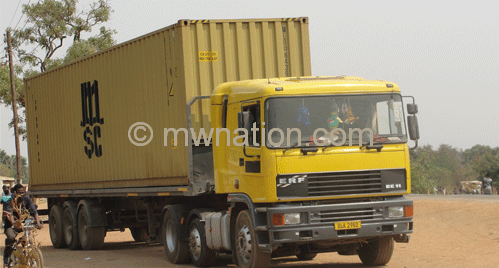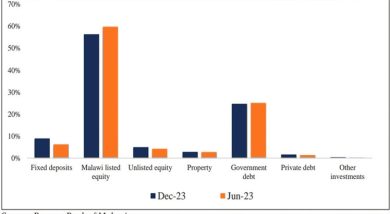New system to ease trade

The 19-member trade bloc, Comesa, has developed a new system to combine the existing instruments to facilitate trade through smooth movements of goods in the region under what is called Virtual Trade Facilitation System (CVTFS).
The new online system, expected to cut down non-tariff barriers, reduce the cost of doing business and transport by 40 percent and improve intra-regional trade, is being officially piloted in the northern corridor comprising Kenya, Uganda, Rwanda and Democratic Republic of Congo (DRC), and preparations are underway to extend it to Malawi, Zambia and Zimbabwe this month.
Malawi’s Ministry of Industry and Trade spokesperson Wiskes Nkombezi yesterday asked for time to check with officials on the status of the system and, if at all, Malawi has been integrated into it.
The Common Market for Eastern and Southern Africa (Comesa) is one of the biggest trade blocs in Africa with a population of close to 400 million and an annual import and export bill of around $32 billion and $82 billion respectively and forms a major market place for both internal and external trading.
But in a statement, Comesa says: “Major transporters who have presence in different countries in the region have been identified for the pilot project. They are Kuehne and Nagel, Spedag Interfreight, Freight Forwarders and Bollore SDV.”
The US$1 million system funded by European Union (EU), according to Comesa, is aimed at integrating the Comesa yellow card [a motor vehicle insurance scheme valid in the region], the transit data transfer module, the Comesa carrier licence for road freight operators, Comesa regional customs bond guarantee system, Comesa harmonised axle load and gross vehicle mass limits which includes the Comesa certificate of overload control and the Comesa customs declaration document.
The system will be accessible to customs, freight forwarders, insurance companies, banks, port authorities, container freight stations and traders, among others.
“This initiative is line with the provision of the Comesa treaty. Over the years, Comesa has applied the protocol on transit trade and transit facilities to make regulations and harmonised policies to facilitate regional trade,” says Comesa.
The Comesa treaty promotes, among other things, the co-operation in the cultural and social affairs within the region.
But the trade bloc argues that while these instruments have contributed to the reduction of costs of doing business, challenges still continue in terms of disruption in the movement of goods.
Some of the challenges include high trucking operating costs, loss of goods during transit, cargo dumping, inability to control counterfeit, pilferage and long transit time.
“Long release time continues to be experienced, delayed clearance at the borders, diversion of goods in transit and non-availability of goods regional bond guarantees for most transporters,” says Comesa.
Of great importance is the inclusion of small and medium enterprises (SMEs) that deal with cargo delivery from manufacturers within Comesa and export cargo from member countries.
Meanwhile, over 100 trips have been made for cargo from port of Mombasa in Kenya to Uganda, Rwanda and DR Congo since the pilot started on June 25 this year.
The CVTFS team is currently making onsite training at borders in the northern corridor with the pilot and subsequent rollout on all countries by August 2013.
The bloc is also carrying out a mission to extend the pilot of CVTFS to the North-South Corridor comprising Malawi, Zambia and Zimbabwe for goods originating from the northern corridor where it is being implemented.
Preparations to pilot the Djibouti-Ethiopia corridor have also been completed and this pilot will be extended to Sudan which is part of the corridor.





